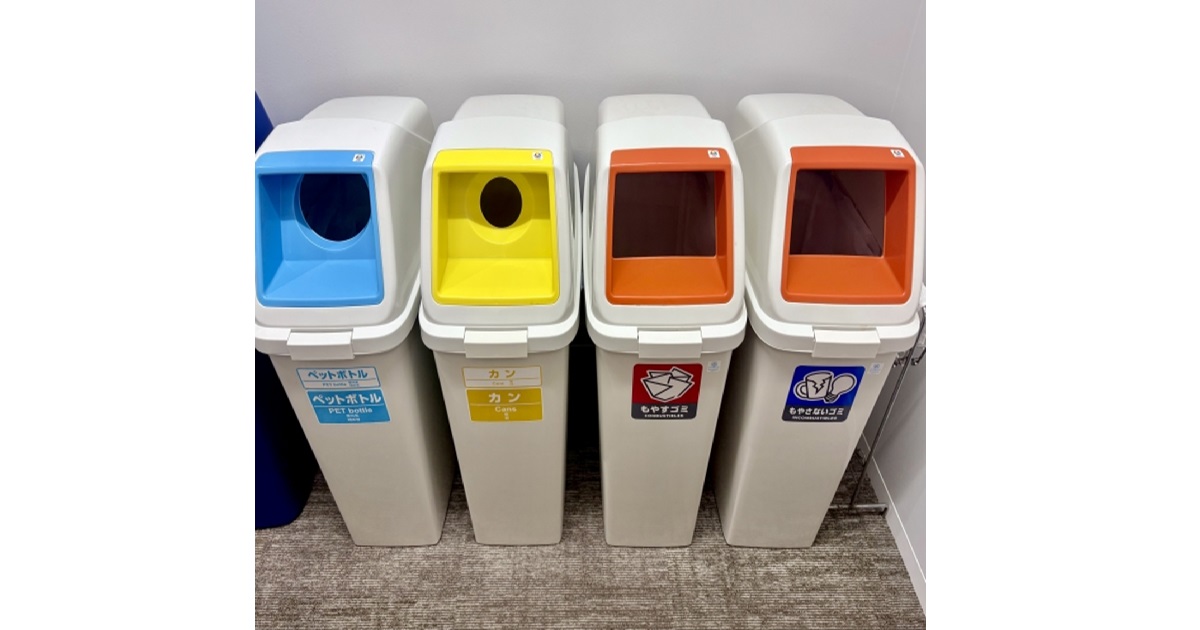You’ve just finished a delicious onigiri (rice ball) from a convenience store.
Now you’re left with the plastic wrapper.
You see a row of trash cans.
It should be simple, right?
Wrong.
You’re faced with a confusing array of symbols and Japanese characters: 燃えるゴミ (burnable), 燃えないゴミ (non-burnable), プラスチック (plastic), 缶・びん (cans/bottles)…
You freeze.
Panic sets in.
You have no idea where to put the tiny piece of plastic in your hand.
Welcome to one of the most stressful experiences for any foreigner in Japan: sorting garbage.
Don’t worry.
I know that feeling.
Every Japanese person has had to learn this complex system.
Today, I’m going to give you a simple, traveler-friendly guide to survive.
Don’t Panic: A Simple Guide to Japan’s Crazy Garbage Rules
The First, Most Important Rule: Public Trash Cans Are Rare
Before we even talk about sorting, you need to know this: public trash cans are incredibly rare in Japan.
You will not find them on most street corners.
This is why you will see Japanese people carrying their small bits of trash with them all day.
The basic rule is to take your trash home with you.
Your best bet for finding a trash can is inside train stations, or next to vending machines and convenience stores (but these are usually only for items purchased there).
The Traveler’s “Big Three” Categories
The rules can vary by city, but for a traveler, you really only need to understand three main categories you’ll encounter at convenience stores or train stations.
1. Burnable (燃えるゴミ – Moeru Gomi)
This is for things that can be incinerated.
Think of it as “kitchen waste.”
What goes here: Paper products (receipts, tissues), food wrappers, chopsticks, leftover food.
That onigiri wrapper from earlier?
It goes here.
2. Plastic Bottles (ペットボトル – PET Botoru)
This is JUST for PET plastic bottles (the kind that hold water, tea, and soda).
There’s a three-step process here:
1. Finish the drink completely.
2. Take off the plastic label/wrapper (this goes in Burnable).
3. Take off the cap (this often goes in a separate small bag or container right next to the bottle bin).
Yes, it’s a lot of work for one bottle.
This is the Japanese way.
3. Cans & Glass Bottles (缶・びん – Kan / Bin)
This one is usually straightforward.
Cans (like coffee or beer) and glass bottles go into this bin.
Again, make sure they are empty.
Taka’s Pro-Tip: The “Gomi Bukuro” Strategy
So what’s the real pro-move?
How do you handle this like a local?
You carry your own small trash bag (“gomi bukuro”).
I’m serious.
A small plastic bag or a reusable pouch in your backpack is a lifesaver.
You just put all your small trash in there throughout the day and then sort it out properly when you get back to your hotel or find a proper set of bins.
It saves you the stress of searching for a trash can every five minutes.
You can find all sorts of compact, stylish portable bags on Amazon that are perfect for this. It’s a small investment for a huge amount of peace of mind.
My Final Word: It’s a Sign of a Deeper Culture
I know it seems crazy and inefficient.
Why go to all this trouble?
Because in Japan, keeping public spaces clean is a shared social responsibility.
The complex sorting is not just about recycling; it’s about everyone doing their small part to respect the community and the environment.
When you take the time to sort your trash correctly, you’re not just following a rule.
You’re participating in Japanese culture in a very real, very local way.
You Might Also Like
The same “don’t bother others” mindset that governs garbage rules also applies to behavior on public transport.
Have you ever wondered why Japanese trains are so quiet?
The Unspoken Rules of Japanese Trains: Why They Are So Quiet




